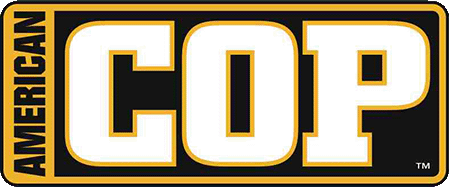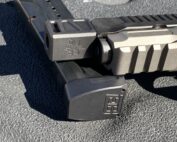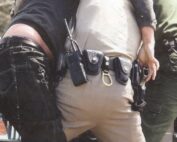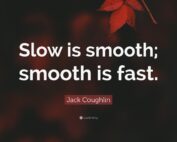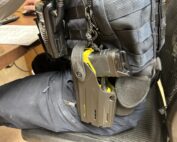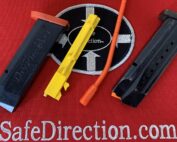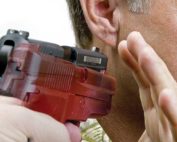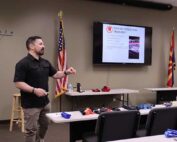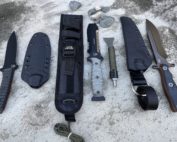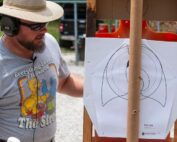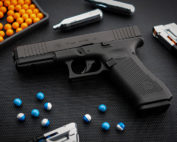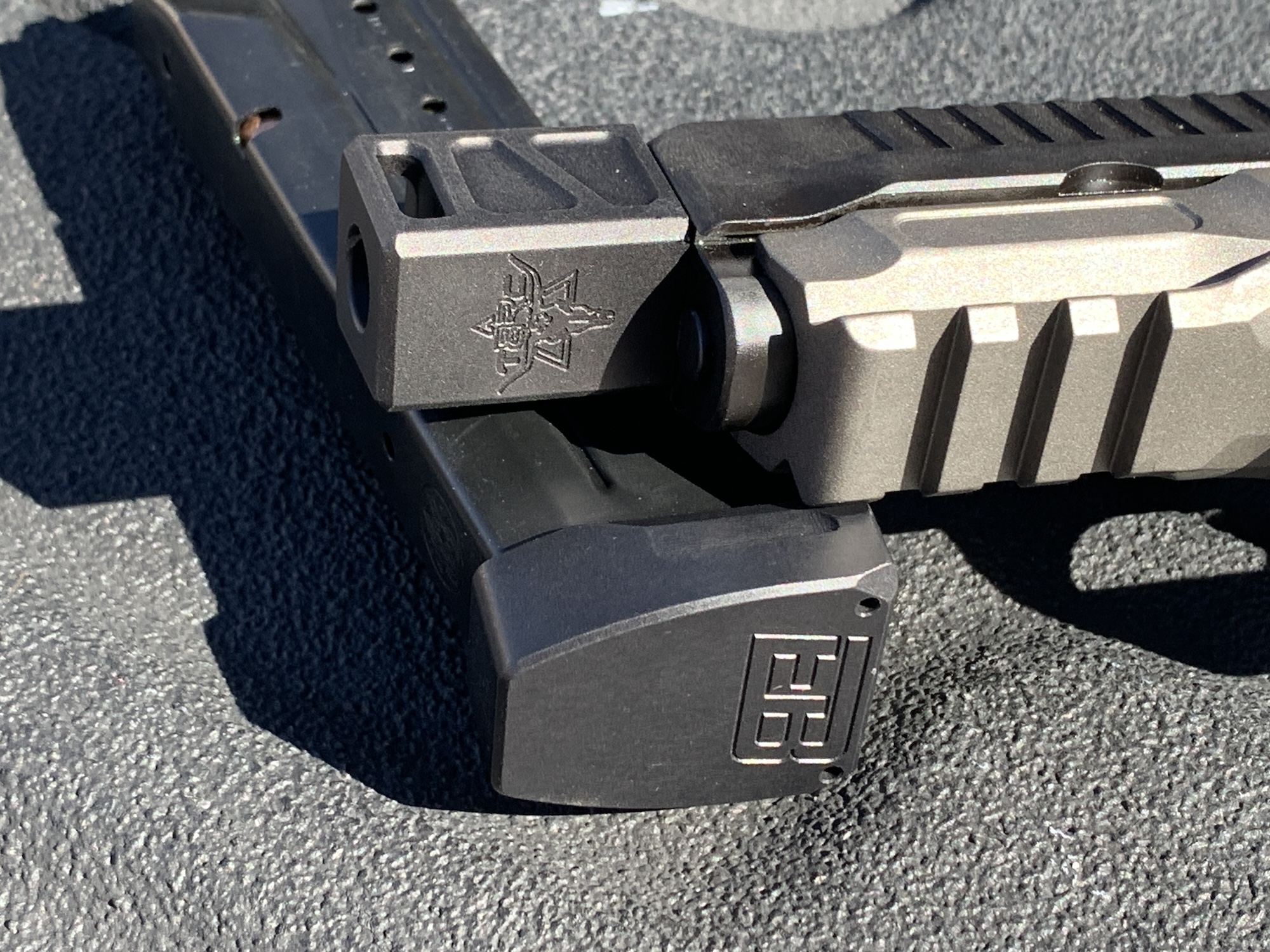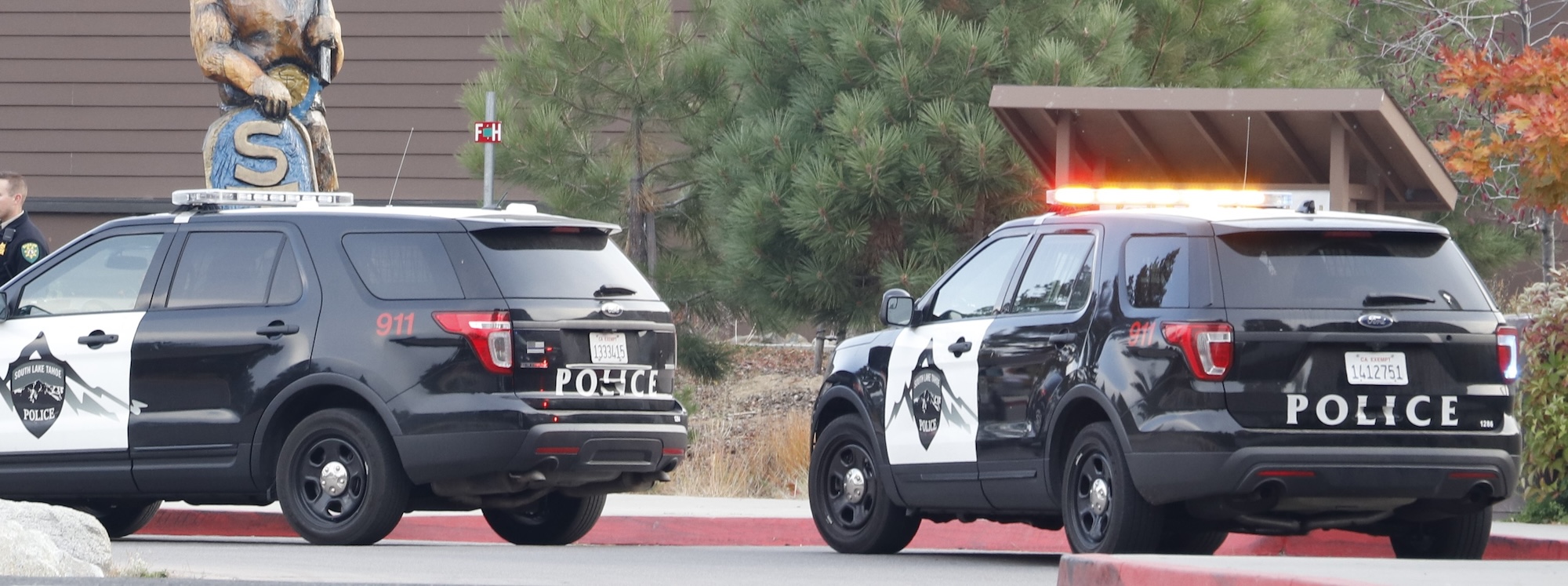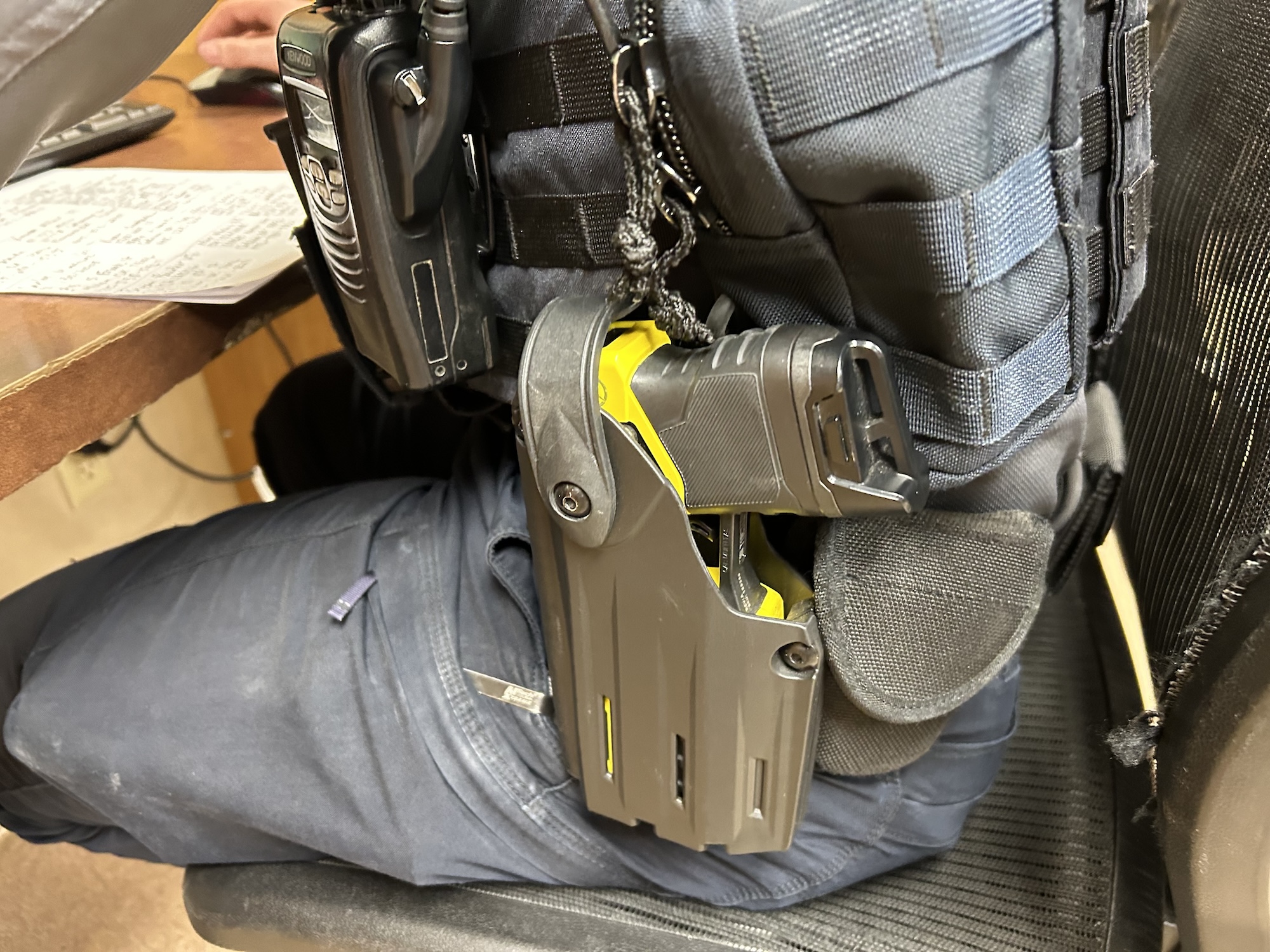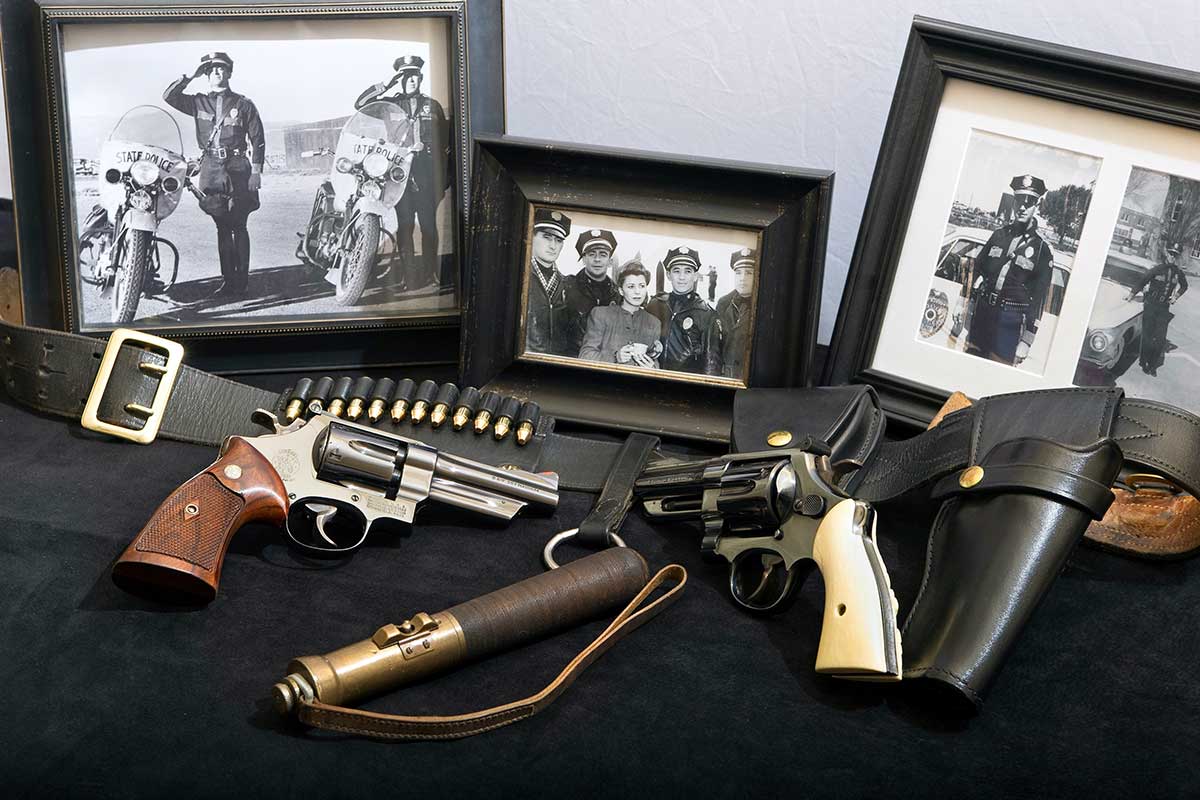
AC-040721-Wheelgun-WG-1-800
I had the privilege of instructing the “revolver day” of a New Mexico Law Enforcement Academy’s Firearms Instructor Course recently. There were 14 cops in the class and experience ranged from a few years to one gent with 27 years in the bag.
None of them had carried a revolver as a duty gun. A couple carried J frames as backups; some had recreational experience with them, mostly as kids. Several had never fired a revolver. The general consensus of the group was that revolvers worked pretty good back in the day, but their ship had sailed.
This struck me as odd coming from commissioned officers. In fairness, my generation was the last of many to carry revolvers as the norm.
Revolvers are certainly still capable of
martial duties—they just need to be operated
in the most efficient way possible.
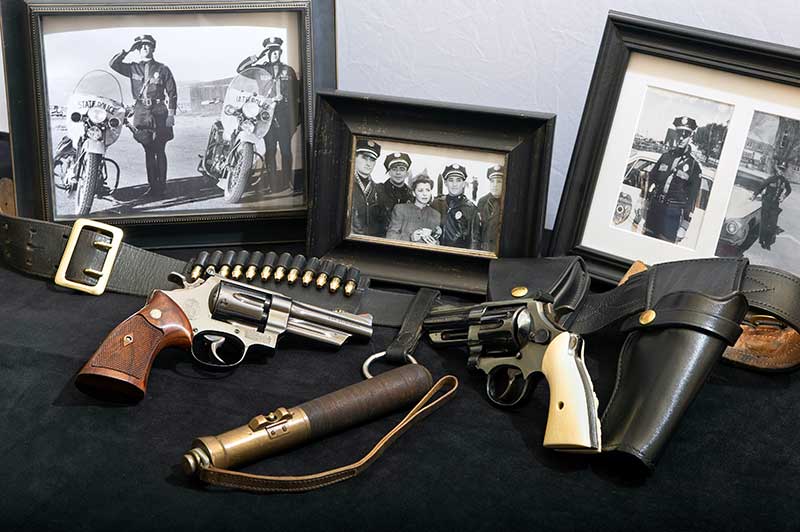
Lawmen of old that influenced the author kept the peace with revolvers like these N Frame Smith & Wesson .357 Magnums. The four-inch Model 27 on the left and the ivory stocked 3 ½-inch Pre Model 27 would still be up to that task.
My academy class in 1988 graduated 36 officers from around the state. Only six of those officers carried semiautomatic pistols. In the months after I graduated, cops in New Mexico transitioned to semi-autos in droves.
By then, the Glock 17 had been around long enough to earn the trust of the law enforcement market. The Glock was a primary catalyst for the switch—it proved that semi-autos could be as simple to run and as reliable as revolvers.
Cops of today can be forgiven for a lack of familiarity with revolvers, but they shouldn’t automatically relegate them to antiquity.
When SEAL Team 6 was formed in 1980, the first handgun issued to them was the S&W Model 66 .357 Magnum revolver. The stainless revolvers were selected for rust resistance in the environment that they would be used. The SEALS fired thousands of rounds per week and became fiercely proficient.
Revolvers are certainly still capable of martial duties—they just need to be operated in the most efficient way possible.
RUNNING THE GUN
The way to shoot a double-action revolver is double-action (DA). Mastering two trigger pulls on a D-A revolver like you have to on a conventional DA semi-auto is unnecessary if you always shoot the revolver double-action. As a defensive weapon, there is no reason to thumb cock the hammer and shoot from single-action mode.
With practice comes the realization that single-action fire is an unnecessary crutch—even at long range. Cocked revolvers, not fired, need to be de-cocked. A simple task when you are relaxing in your garage, it can be a little trickier when your heart is racing at 190 bpm and your fingers are gloved, wet, frozen or injured.
The “secret” to running the trigger on a fighting revolver can be extracted from any lesson on the marksmanship fundamental of trigger control—smooth steady pressure straight to the rear.
Once you start pressing, keep the hammer moving constantly rearward until the shot breaks. Release the trigger all the way (to its normal resting position) without losing contact and repeat as needed.
It’s a little weird if you’re used to the short trigger reset of a striker fired pistol or a 1911.
Shooters familiar with semi-autos but new to revolvers tend to “short stroke” the trigger reset. So doing so disallows a new chamber from advancing in line with the bore.

Relief cut on the cylinder stop notch forms an “arrow” that points in the direction the cylinder rotates. Left to right: Ruger Speed Six and S&W 547 turn counter-clockwise, while the Colt Python’s cylinder rotates clockwise.
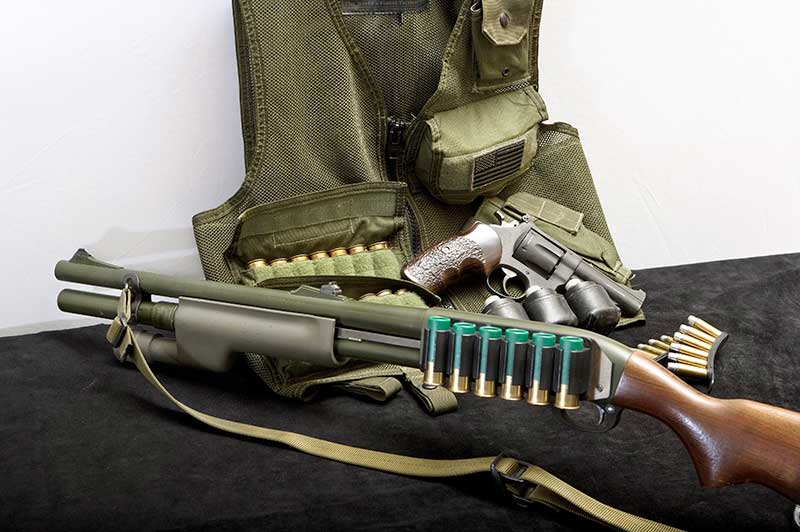
Revolvers, like pump shotguns, are very effective defensive weapons for those willing to practice and carry plenty of spare ammunition. The Remington 870 and S&W Model 29 pictured are good examples of both weapon platforms.
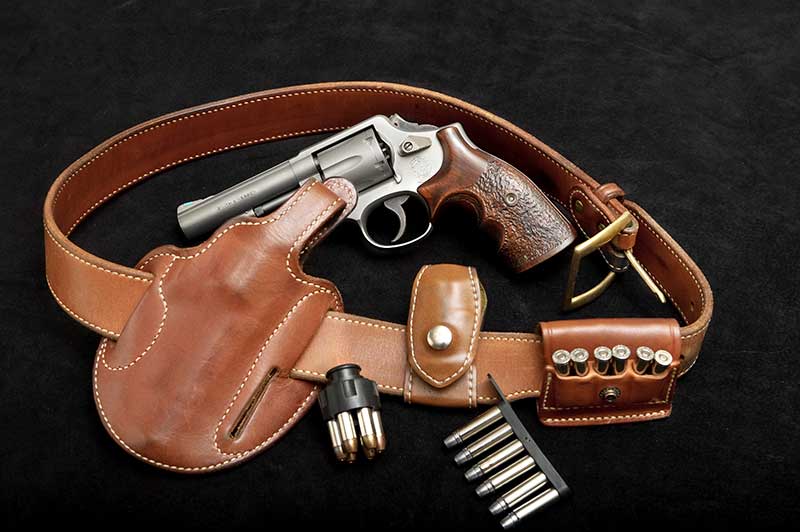
It’s wise to carry speed strips or a 2X2X2 pouch in addition to speedloaders. This allows topping a partially emptied revolver off without squandering live rounds. There’s nothing new to see here, just old stuff that still works really well.
The trigger pull on modern double-action revolvers may seem oppressively heavy and encourages novices to either thumb cock the revolver and fire single-action or switch to an auto. Yes, the pull on a new S&W revolver is heavier than the average Glock and it takes some getting used to. The way to get used to it is to do it.
A good rule when buying a new centerfire revolver is to dry fire it a thousand times. Dry fire “marries” the action parts and helps break them in. The trigger pull doesn’t need to be excessively light as long as it feels smooth.
Legendary speed shooter Ed McGivern made a statement in his classic 1930s book Fast and Fancy Revolver Shooting that summed things up nicely. “It is usually the case with double-action revolvers, that the more they are operated by the double-action method and the more care and attention they receive, the smoother the actions become and the better they operate.”
That’s the essential beauty of a double-action revolver. Dry fire the crap out of it and it gets real smooth. All that dry fire used to hone the action also strengthens the muscles operating your trigger finger and trains the feel of that smooth constant press.
“Staging” the trigger is a technique better left on the target range. Staging consists of quickly pulling the trigger to the point of final friction and then establishing a sight picture. This leaves the shooter with a short distance for the trigger to travel before ignition, but complicates a simple system.
The shooter has to know the gun well to stage without the occasional mess up. The “feel” of staging the trigger can vary from one chamber to the next in the same gun. Improper staging typically results in an unintentional discharge. Do not try to make your double-action pull feel like a single-action by staging the trigger.
It’s a true statement that the long, heavy trigger pulls of revolvers are more resistant to negligent discharges than most semi-autos if a finger is on the trigger when it shouldn’t be. That fact in no way justifies getting a head start on the trigger press before your sights are on target. This practice violates basic, sacred safety rules that apply to all who carry firearms.
Present the gun, acquire the sights and press. Your brain is capable of making minor corrections in sight alignment/picture as the trigger travels.
Hollywood provides a flawed training manual for revolvers; avoid it at all costs. I am referring to the abominable practice of flipping the cylinder in and out of the gun like action heroes do. Actors have gun wranglers to repair the damage they shenanigans cause—you likely do not.
The “Hollywood flip” will beat the yoke of your revolver out of alignment in fairly short order. The heavier the cylinder, the quicker this will occur. Always support the cylinder all the way out to the fully open position and all the way in to the closed/locked position.
There are several methods that work for running a revolver, I trust the late 80s cop training on the subject (sometimes called the Universal Method).
A right-handed shooter lays the revolver on its right side in the palm of the left hand as the cylinder release is activated with the right thumb. The left middle and ring finger push the cylinder out and join the left thumb to lock it fully open. The left index finger and pinky wrap around and grip the frame on either side of the cylinder window.
Counterintuitive to semi-auto training, the shooting hand loads the gun. The support hand, typically being a shade less dexterous, only has to hold the gun and lock the cylinder fully open. Loading a revolver is a somewhat busier task than sticking a magazine into the magazine well of an empty pistol. It makes sense to use your strong hand for this purpose.
Working the extractor rod is a function best performed by striking it with the open palm of the shooting hand. The muzzle should be straight up; the strike should come straight down. If you hit the extractor rod from an angle, you may bend it and cause binding in the rotation of the cylinder. This is the most “bulletproof” method of emptying the revolver in an emergency reload. It gets spent cases the heck out of the gun.
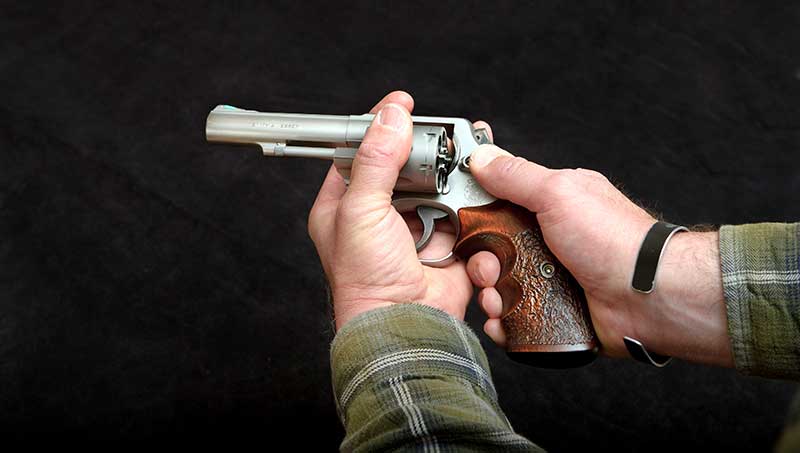
To properly open the cylinder, lay the revolver in your support hand. Press the cylinder release with your shooting thumb and push the cylinder out with the middle and ring fingers on your support hand. Support hand index finger and pinky secure the gun.
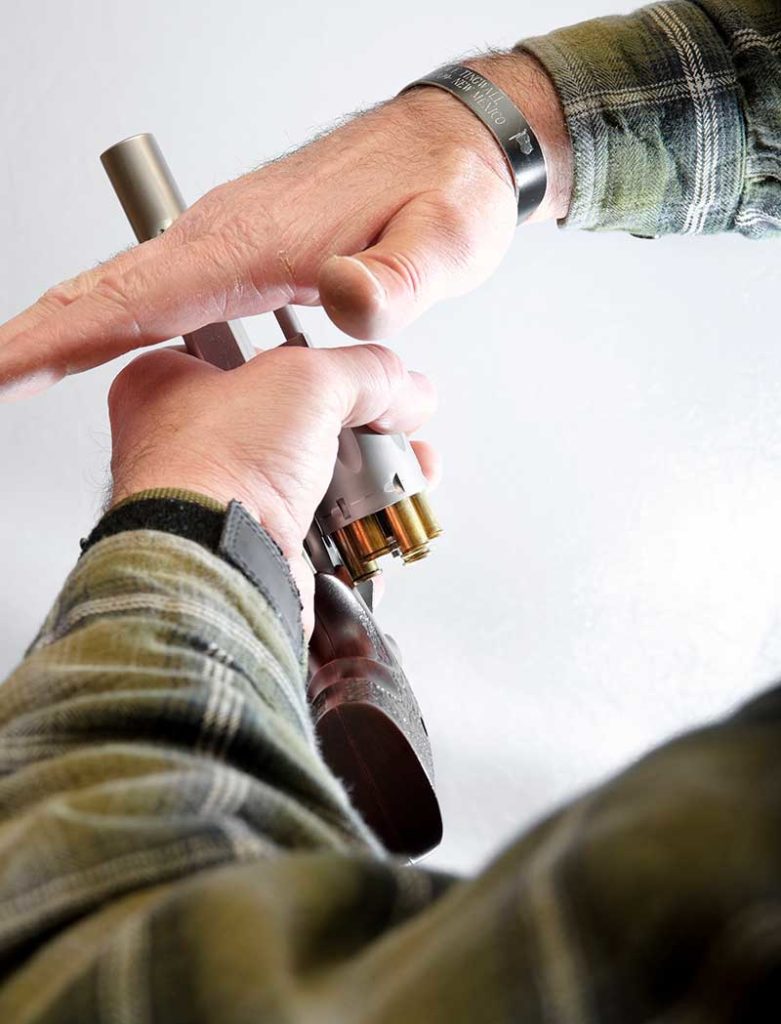
Most reliable way to clear empty cases is to strike the extractor rod straight down with the palm of the shooting hand. This method provides more force than using a thumb or index finger.
Granted, it’s a tick slower than using the support thumb to press the extractor rod while the strong hand fetches fresh ammo. But your support thumb may not have the strength to clear a swelled or split case that can lodge in a chamber and tie up your gun in an empty and quite useless condition.
Additionally, using the support thumb is much more likely to gift you with a failure to extract condition. If you don’t execute it perfectly, the empties may hang around and give a case rim the chance to lodge underneath the extractor star.
I’ve caused a few of these debilitating malfunctions in matches trying to “game” it by using my left thumb to shuck empties. I have never had a cases hang up using the palm method.
After the gun is emptied, the support hand rotates the gun as close to vertical (muzzle down) as possible while the strong hand seeks fresh ammunition. Keeping the gun vertical allows gravity to assist the rounds dropping fully into the cylinder.
Speedloaders or full moon clips are the quickest way to reload an empty revolver. Carrying a speedloader takes about as much room as carrying an extra cylinder in your pocket. A lot of folks don’t carry them with a concealed revolver for that reason.
Speed strips and 2X2X2 pouches are much flatter and conceal better. Even if you carry a speedloader, it’s a good idea to carry strips or a pouch. This allows you to top off the revolver if you fire and partially empty it. If all you have are speedloaders or if the ammo in the cylinder is moon clipped you’ll be mandated to dump live ammunition on the deck to refill the gun to capacity. Speed strips or a pouch will prevent this and are infinitely quicker than trying to load loose rounds from a pocket.
It pays to know which way your cylinder rotates when you’re empty loading from a pouch or strip. S&W’s and Rugers rotate counter clockwise, Colts rotate clockwise. The cylinder stop notch near the rear of the cylinder has a relief cut that forms an arrow pointing in the direction the cylinder turns if you forget.
With the cylinder fully open, load two rounds at a time into the chambers at 12 and 10 o’clock. As you reach for the next two or peel off the strip, rotate the cylinder clockwise 1/3 turn (S&W). This orients the loaded rounds on the correct side of the forcing cone/barrel if you have to shut the gun and fire during the reload. Otherwise, you’ll click on two empty chambers prior to firing, wasting time and likely slapping the trigger frantically praying for a bang.
While tactical reload may be viewed as nearly an administrative function with an autoloader, it’s more important with a revolver because of its limited capacity. If you shoot it at all you should be thinking about reloading. Like pump shotguns, loading what you shoot is a good rule.
Pump guns and revolvers aren’t harder to operate than semi-autos, just different. Pump shotguns are viciously effective if you’re willing to get good with them. Such is the case with revolvers and they are as viable now as they were “back in the day”.
